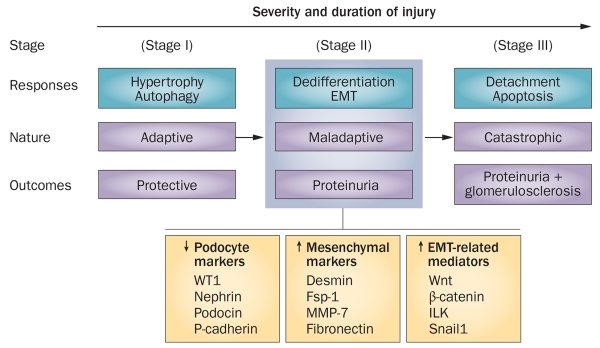Figure 1.
The spectrum of podocyte responses after injury. Podocytes respond to injurious stimuli in different ways, depending on the severity and duration of the injury. These responses include hypertrophy, autophagy, dedifferentiation, EMT, detachment and apoptosis. The nature and consequences of these responses are quite different. The processes of hypertrophy and autophagy (stage I) are adaptive and protective. By contrast, the processes of EMT and dedifferentiation (stage II) are maladaptive and can lead to proteinuria, whereas the processes of detachment and apoptosis (stage III) are catastrophic and lead to proteinuria and glomerulosclerosis. The maladaptive changes of podocytes after injury are consistent with the characteristic features of EMT, in which podocytes lose their podocyte-specific markers and gain markers of mesenchymal cells. Abbreviations: EMT, epithelial-to-mesenchymal transition; Fsp-1, fibroblast-specific protein 1; ILK, integrin-linked kinase; MMP-7, matrix metalloproteinase-7; WT1, Wilms tumour protein.

